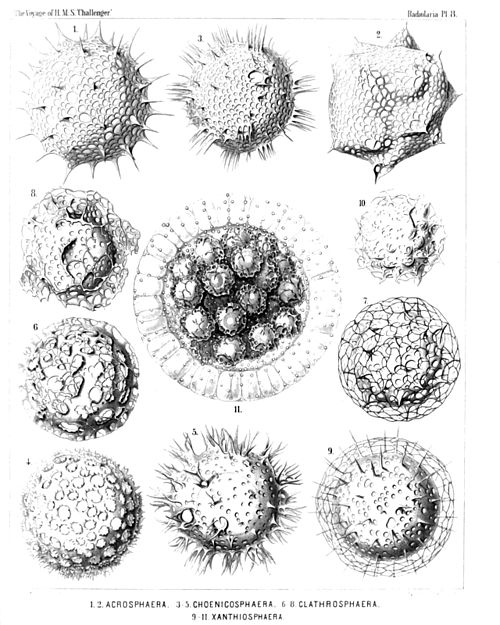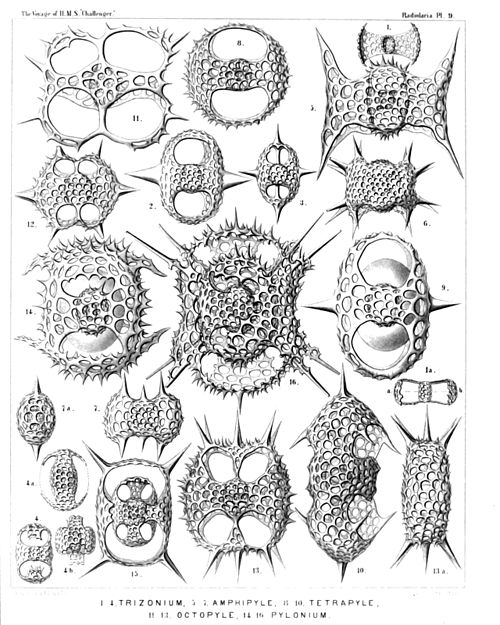Report on the Radiolaria/Plates1
Jump to navigation
Jump to search
PLATE 1.
Legion SPUMELLARIA.
Order COLLOIDEA.
Family Thalassicollida.
|
||||||||||||||||||||||||||||||||||||||||||||||||||||||||||||||
PLATE 2.
Legion SPUMELLARIA.
Order BELOIDEA.
Family Thalassosphærida.
|
|||||||||||||||||||||||||||||||||||||||||||
PLATE 3.
Legion SPUMELLARIA.
Order COLLOIDEA.
Family Collozoida.
|
|||||||||||||||||||||||||||||||||||||||||||||||||||||||||||||||||||||||||
PLATE 4.
Legion SPUMELLARIA.
Orders BELOIDEA.
Families Sphærozoida.
|
||||||||||||||||||||||||||||||||||||||||||||||||||||||||||
PLATE 5.
Legion SPUMELLARIA.
Order SPHÆROIDEA.
Family Collosphærida.
|
|||||||||||||||||||||||||||||||||||||||||||||||||||||||||||||||||||||
PLATE 6.
Legion SPUMELLARIA.
Order SPHÆROIDEA.
Family Collosphærida.
|
|||||||||||||||||||||||||||||||||||||||||||||||||||||||||
PLATE 7.
Legion SPUMELLARIA.
Order SPHÆROIDEA.
Family Collosphærida.
|
||||||||||||||||||||||||||||||||||||||||||||||||||||||||||
PLATE 8.
Legion SPUMELLARIA.
Order SPHÆROIDEA.
Family Collosphærida.
|
||||||||||||||||||||||||||||||||||||||||||||||||||||||||||
PLATE 9.
Legion SPUMELLARIA.
Order LARCOIDEA.
Family Pylonida.
|
||||||||||||||||||||||||||||||||||||||||||||||||||||||||||||||||||||||||||||||||||||||||||||||||
PLATE 10.
Legion SPUMELLARIA.
Order LARCOIDEA.
Family Tholonida.
|
||||||||||||||||||||||||||||||||||||||||||||||||||||||||||||||||||||||||||||||||||









